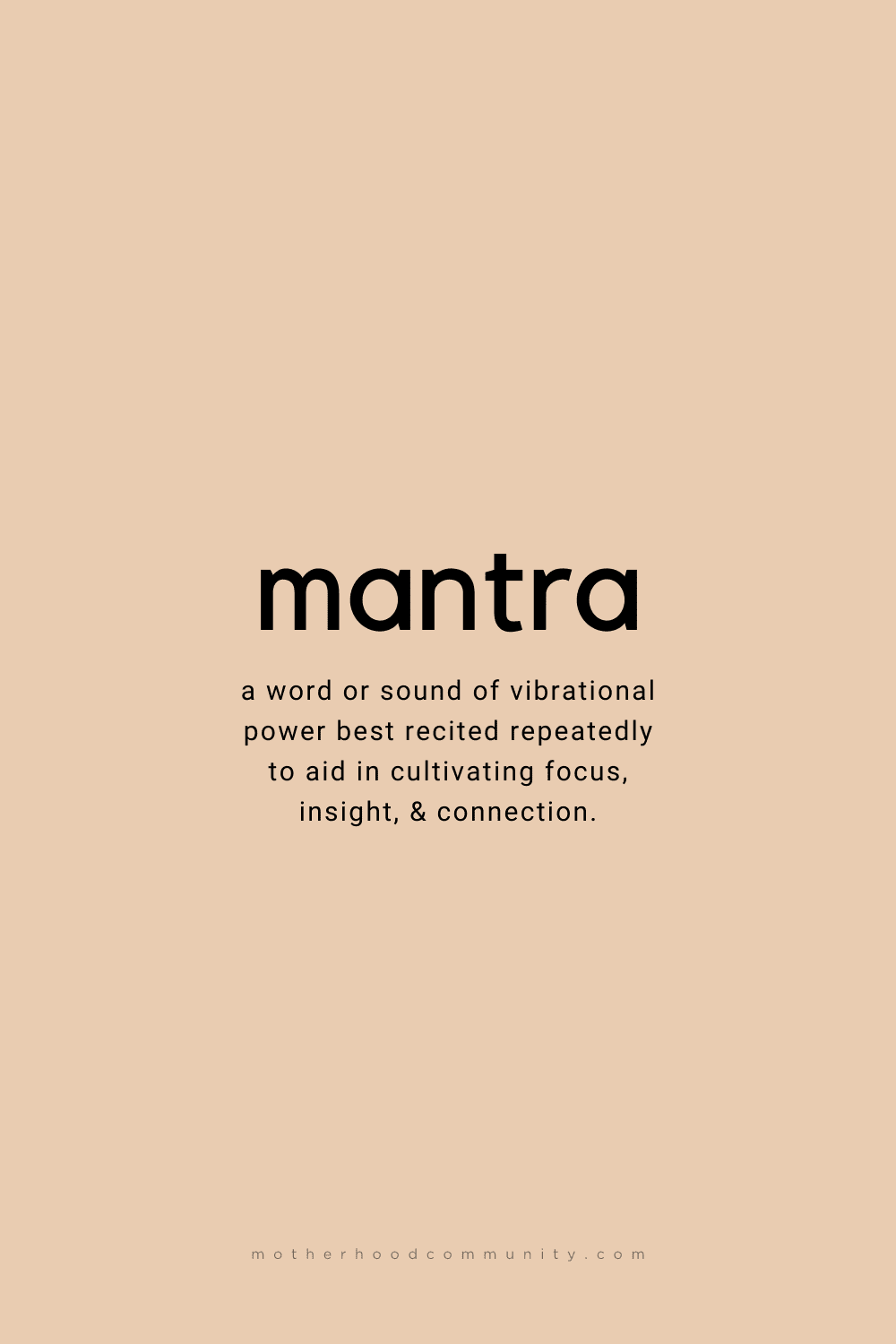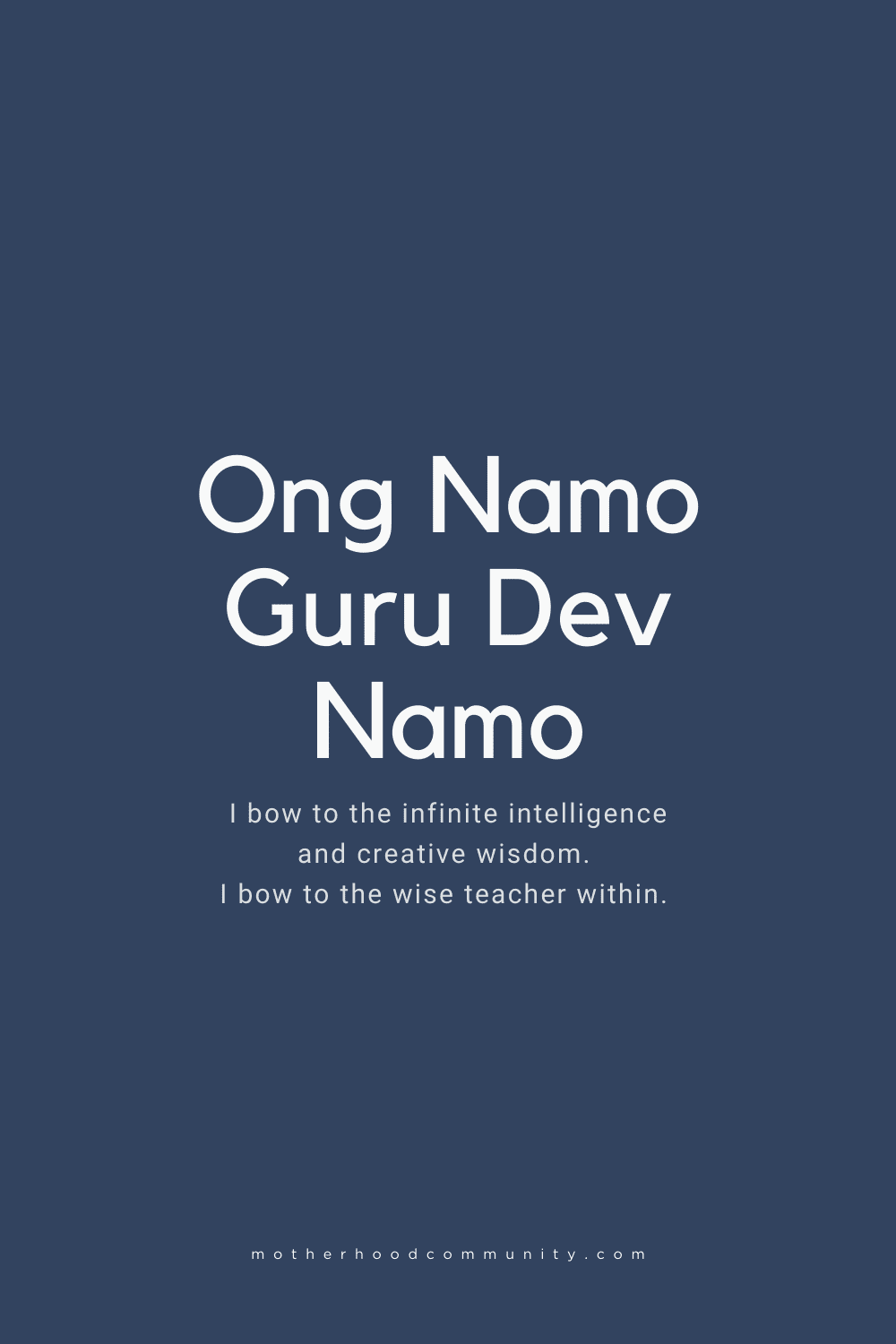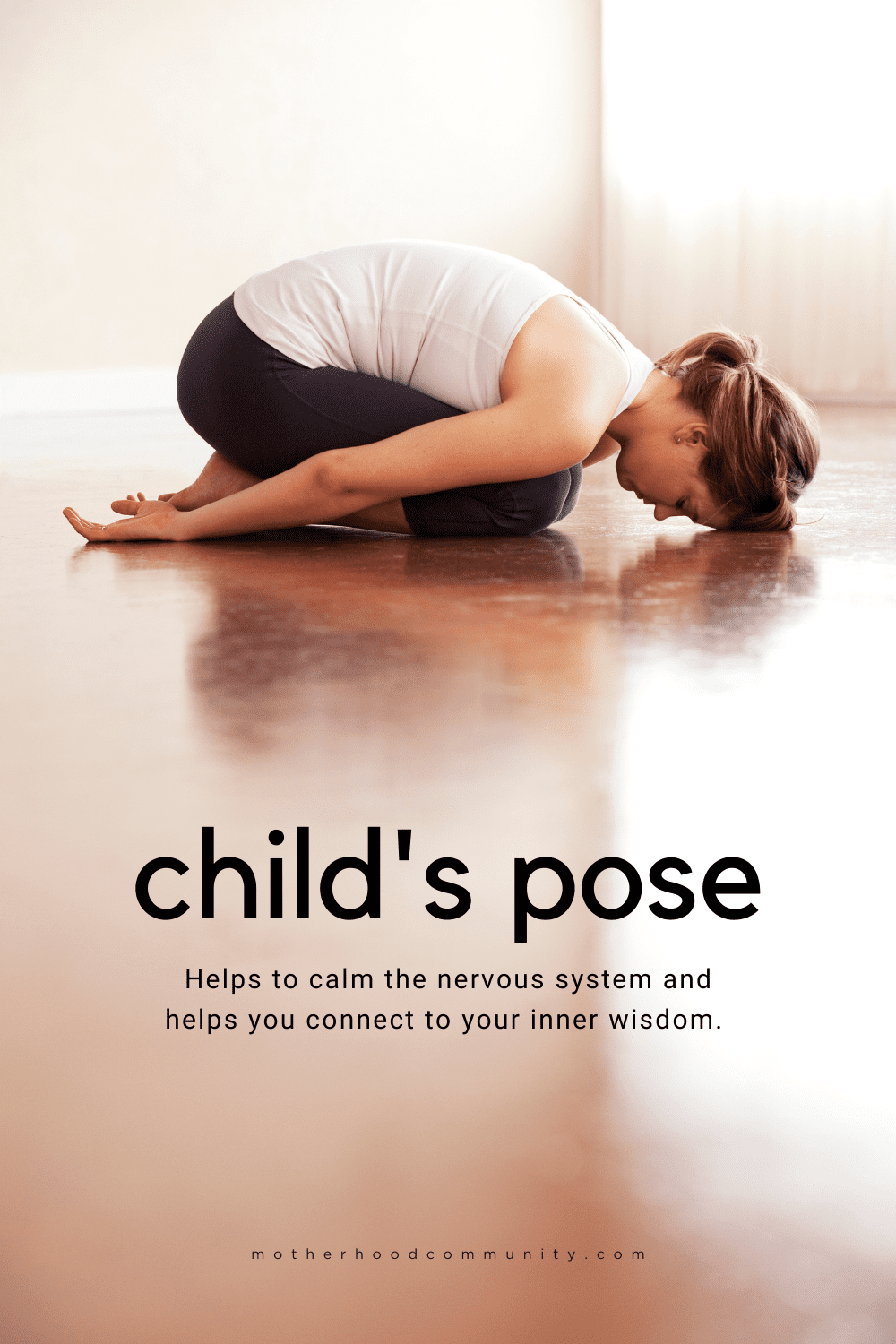When you have repeated it so much, so often, and so well that you hear it within your being, and it comes handy to you. – Yogi Bhajan, Kundalini yoga teacher and author You can use them as tools to help you change habits or ways of being. A mantra can help you ride the emotional rollercoaster of stress, sadness, anger, anxiety, or overwhelm. The right mantra can help you focus and tap into your creativity. Or it can help you connect more mindfully to your partner or children or even yourself. If you’ve gone to a yoga class that started or ended with a collective Om (Aum) then you’ve already been exposed to mantra practice. Ancient yogis have used the power of mantra for thousands of years as a form of mental training and spiritual practice in order to access higher states of consciousness and deepen intuition. High-profile seekers like Apple founder Steve Jobs and artist/singer Tina Turner have also turned to mantra meditation as a way to strengthen inner wisdom and creative power. (1) (2) If it worked for them it can work for you too. It helps you to think differently… I would say it helps you think correctly. That means you can help yourself get the things you want. – Tina Turner on her Buddhist mantra chanting practice You can use this tool in your daily life to become more inspired, calm, balanced, insightful, and loving. Here’s everything you need to know to get started with your own personal mantra meditation practice.
What is a mantra?
The word mantra is comprised of the Sanskrit roots ‘man’ which means mind and ‘tra’ which means vehicle or instrument. A mantra, then, is a vehicle through which you can shift your mental and emotional state. It’s an ancient tool that helps you dissipate mental noise and negative thoughts so you can hear your inner wisdom more loudly and clearly. Many ancient mantras have roots in Hindu and Buddhist traditions as well as Jainism. Sanskrit mantras are found in Vedic/ Vedanta sacred texts such as the Upanishads and the Rig Veda. According to these texts, mantras are powerful sacred sounds and sound vibrations best recited repeatedly to aid in cultivating presence, focus, understanding, and insight. Seed mantras called ‘Bija’ mantras (‘Bija’ is the Sanskrit word for seed) are short sounds vibrations that are used as a way to fertilize your consciousness and mind. The most common Bija mantra is Om (Aum).
What is NOT a mantra?
While words like “I am safe” or “I am worthy of feeling good” are powerful in their own right and are also useful for creating mental and emotional shifts, they are not mantras… They are affirmations. They can certainly be used in conjunction with mantras but don’t confuse one for the other. Intentions like the ones we set at the beginning of a yoga asana class or a yoga nidra meditation session aren’t mantras even though it’s easy to confuse the two.
Common mantras are:
Om (Aum) –
This sound vibration is said to channel the primordial sound of the universe. It’s also the base for other common mantras as you’ll see below.
Om Mani Padme Hum –
The mantra of benevolence and compassion. It means “The jewel is in the lotus.”
Om Namah Shivaya –
Means “I bow to Shiva.” Shiva is one of the three main Hindu deities. In yoga practice, we use this mantra to help us connect to our true Inner Self. This Self is the part of us that’s wise and intuitive.
Om Shanti Shanti Shanti –
“Peace, peace, peace.” This mantra is an invocation for inner peace – peace of mind, peace in the body, and peaceful speech.
How do you use a mantra?
There are several ways to use a mantra. – Attributed to the Buddha In meditation techniques such as Vedic meditation and Transcendental Meditation (TM), a mantra is repeated silently and internally as a means of overriding thought waves to enter deeper states of consciousness. The practice of repeating a mantra either silently or aloud is called ‘Japa’ in yoga practice. Ancient yogis believed that repeating a mantra 108 times amplifies its power. For them, it’s like a code for awakening and self-realization. Vedic mathematicians considered the number 108 a number representing the wholeness of the universe and spiritual union. You can use mala beads (like prayer beads) to help you stay present and keep track of the 108 cycles, but it’s not a necessary part of mantra meditation. And you don’t have to repeat a mantra 108 times to reap its benefits and effects. The main idea is this: Keep your mantra practice as simple as possible. Do whatever works best for you. Do whatever is easiest to help you practice daily. If, for example, repeating a mantra three times works for you, then start there.
A special mantra for increasing intuitive and creative powers:
The intuitive voice within is real. It’s an inherent superpower we’ve all been gifted with, we’ve just forgotten how to use it. Intuition is like a muscle, if we work with it and use it regularly it will strengthen over time. By consistently using a powerful mantra known as the Adi Mantra we can work out our intuitive muscle. The sound currents of this mantra have the potential to shift your state of consciousness and help you unlock your inner wisdom, intuitive knowing, and creative inspiration. It’s short and simple, which makes it easy to remember:
Ong Namo Guru Dev Namo
Adi Mantra Meaning: Ong: Infinite Intelligence + Creative Wisdom (Universal Vital Force Energy) Namo: to bow or to call upon with an open heart and willing mind Guru: wisdom, source of transformative knowledge, teacher Gu • ru: broken into two parts: gu = darkness, unconsciousness ru = light, consciousness Guru dev: the Divine teacher within, inner knowing, insight, your higher self
In Kundalini yoga it’s customary to begin every practice by chanting the Adi Mantra at least three times as a way to ‘tune in.’ The act of intentionally and consciously ‘tuning in’ to the spacein and around you helps to create a demarcation point between whathas been (the past), and whatever will be (the future). Energetically, tuning in with the Adi Mantra functions much like hitting the reset button where you wipe the slate clean and begin anew. Your intuitive voice cannot beheard in the midst of fear and anxiety. By using this mantra you can increase inner calm and inner knowing.
Ong Namo… I bow to the Infinite Intelligence and Creative Wisdom.
We bow with an open heart and a humble mind. We bow to the infinitely wise and intelligent life force energy that flows through all things. We bow as a symbol of surrender and devotion.
Guru Dev Namo… I bow to the Divine Teacher Within.
We bow to the transformative knowledge and insight that is within us. We bow to our higher selves, the embodiment of our fully expressed potential. We surrender to the process unfolding We open our hearts to trust in our ability to access the answers we seek within.
Best Practices for Adi Mantra:
You can tune in by simply sitting upright and closing your eyes. Or you can bring your palms together at your heart to form Anjali mudra, or simply place your hands over your heart. Or, if you really want to get your whole body into it, you can bow your head to the ground in Balasana or child’s pose like this:
Take a few deep, slow breaths. Use your breath as a tool to anchor into this moment. Notice the presence of this moment. Bring your attention to the center of your chest and forehead. Imagine a ray of white light circulating through the center of your heart center and forehead. Repeat the mantra at least three times. Feel the energy of its message. Become intimate with it. Welcome it into your daily life and allow it to awaken your intuitive and creative powers and inner guidance. Keep in mind – these are powers you’ve had all along… you’re just tapping into it now. This mantra can help you stay connected to your power and help you cultivate inspiration so you can unleash your creative genius. Ong Namo Guru Devo Namo… Ong Namo Guru Devo Namo… Ong Namo Guru Devo Namo… REFERENCES : (1) https://www.independent.co.uk/news/world/asia/kainchi-dham-the-indian-ashram-where-silicon-valley-s-finest-go-to-discover-themselves-a6720006.html (2) https://www.youtube.com/watch?v=MOsr_ZOi-Jo



title: “Powerful Mantra To Awaken Your Intuitive Wisdom Motherhood Community” ShowToc: true date: “2023-01-05” author: “Jennifer Binger”
– Yogi Bhajan, profesora de yoga Kundalini y autora Si bien estos momentos no son divertidos ni agradables, definitivamente pueden ofrecernos oportunidades de crecimiento y expansión si podemos ver más allá del dolor y la incomodidad momentáneos. En lugar de sumergirnos en el agujero más profundo al revolcarnos en nuestra situación o dejarnos inmovilizar por el miedo, la ansiedad, la duda, el temor o cualquier otra emoción de baja frecuencia, podemos usar este momento desafiante como una oportunidad para sintonizarnos con la sabiduría intuitiva interior. La voz alta intuitiva dentro es real. Es un super poder inherente del que todas hemos sido dotadas, sólo que hemos olvidado cómo usarlo. La intuición es como un músculo, si trabajamos con él y lo usamos regularmente, se fortalecerá con el tiempo. Al usar consistentemente la palabra mantra conocido como Adi Mantra, podemos desarrollar nuestro músculo intuitivo, aunque existen diversos ejemplos de mantras o recitación para alejar pensamientos negativos. La repetición del mantra ayuda con un aspecto de la iluminación; por lo tanto, todo ser humano puede lograr lo que los hinduistas llaman en sánscrito Anâmaya, salud espiritual. Las corrientes de sonido del universo de este mantra tienen el poder espiritual de cambiar tu estado de consciencia y ayudarte a desbloquear tu sabiduría interior, tu conocimiento intuitivo y tu inspiración creativa para la sanación.
Es corto y simple, lo que hace que sea fácil de recordar:
Ong Namo Guru Dev Namo
Significado del Adi Mantra:
Ong: Inteligencia Infinita + Sabiduría Creativa (Energía de Fuerza Vital Universal) Namo: Hacer una reverencia o invocar con el corazón abierto y la mente dispuesta. Gurú: Sabiduría, fuente de conocimiento transformador, maestro . Gu • ru: dividido en dos partes, gu = oscuridad, inconsciencia, ru = luz, consciencia Guru dev: el maestro Divino interior, el conocimiento interno, la percepción, tu ser superior Muchas mantra om tienen raíces en el hinduismo y budismo tibetano. La palabra védica se encuentra en textos como Upanishads y Rig Veda.
Los mantras más comunes son:
Om (om) Om mani padme hum Om namah shivaya Om shanti shanti shanti
En el yoga Kundalini es costumbre comenzar cada práctica cantando el Adi Mantra al menos tres veces como una forma de “sintonizar”. Mantra no es una palabra sánscrita, sino dos palabras: Man y tra. Man significa mente. Tra significa el calor de la vida. Ra significa sol. Entonces, el mantra es una poderosa combinación de palabras que, si se recitan, llevan el efecto vibratorio de cada una de tus moléculas al Infinito del Cosmos. Eso se llama ‘Mantra’”. – Yogi Bhajan, profesora de yoga Kundalini y autor El acto de “sintonizar” intencional y conscientemente el espacio dentro y alrededor tuyo ayuda a crear un punto de demarcación entre lo que ha sido (el pasado) y lo que será (el futuro). Enérgicamente, sintonizarse con las funciones de Adi Mantra es como presionar el botón de reinicio con el que limpias la pizarra y comienzas de nuevo. Las corrientes de sonido vibracional del mantra te ayudan a anclarte en el momento presente, lo que ayuda a disolver el miedo y la ansiedad. Tu voz intuitiva no puede ser escuchada en medio del miedo y la ansiedad. Usando este mantra puedes aumentar la calma interior y el conocimiento interno. En la tradición yóguica, un mantra es una palabra, una serie de palabras o sonidos que se repiten para ayudar a cultivar el enfoque, la presencia y la concentración. Utilizo este mantra todos los días al comienzo de mi jornada laboral, especialmente antes de comenzar a escribir como una forma de invocar inspiración y sabiduría creativa. También uso este mantra cuando me siento asustada o atorada o vacilante. Es mi mantra para arrancar cuando necesito un reinicio, y una vez que lo experimentes, quizás también sea el tuyo. Este mantra es sobre la rendición. Al usar este mantra, también estás practicando el principio yóguico de Ishvara Pranidhana, o riendiéndote a un poder superior con devoción y dedicación. Ong Namo… Hago una reverencia ante la Inteligencia Infinita y la Sabiduría Creativa. Hacemos una reverencia con un corazón abierto y una mente humilde. Hacemos una reverencia ante la energía de la fuerza vital infinitamente sabia e inteligente que fluye a través de todas las cosas. Hacemos una reverencia como símbolo de entrega y devoción. Guru Dev Namo… Hago una reverencia ante el Divino Maestro Interior. Hacemos una reverencia ante el conocimiento transformador y la percepción que está dentro de nosotros. Hacemos una reverencia ante nuestro ser superior, la encarnación de nuestro potencial plenamente expresado. Hacemos una reverencia al proceso en desarrollo. Abrimos nuestros corazones para confiar en nuestra capacidad de acceder a las respuestas que buscamos en nuestro interior.
Las Mejores Prácticas para Adi Mantra:
Puedes sintonizar simplemente sentándote derecha y cerrando los ojos. – Yogi Bhajan, profesora de yoga Kundalini y autor O, si realmente quieres meter todo tu cuerpo en él, puedes inclinar tu cabeza al suelo en Balasana o la postura del niño así:
Haz algunas respiraciones profundas. Usa tu respiración como una herramienta para anclar en este momento. Nota la presencia de este momento. Lleva tu atención al centro de tu pecho y tu frente. Imagina un rayo de luz blanca que circula por el centro del corazón y la frente. Repite el mantra al menos tres veces. Siente la energía de su mensaje. Crea intimidad con él. Dale la bienvenida a tu vida diaria y permite que despierte la sabiduría intuitiva y la guía interna que has tenido dentro de ti todo el tiempo. Ong Namo Guru Devo Namo… Ong Namo Guru Devo Namo… Ong Namo Guru Devo Namo… Referencias: (1) https://www.independent.co.uk/news/world/asia/kainchi-dham-the-indian-ashram-where-silicon-valley-s-finest-go-to-discover-themselves-a6720006.html (2) https://www.youtube.com/watch?v=MOsr_ZOi-Jo


